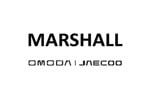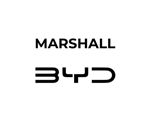"Apparently there is a Chinese proverb that says if you see a ghost it will cast a shadow over your life forever. When SAIC saw the state of MG Rover’s finances they must have been staring into the looming spectre of bankruptcy and feared for their own financial security.
Two weeks ago SAIC thought they were about to create a virtual yet fully integrated company thanks to a vertical joint venture in vehicle design with MG Rover. Despite talk in the British media of a Chinese takeover Shanghai Automotive were always insistent that they were only interested in specific parts of the British company.
This was to be a partnership, filling a large hole in their company structure. SAIC are one of the Big 3 in China, producing over 600,000 units a year and hungry for more, but they have no designs of their own. This has been highly lucrative for them so far, but their position is under threat from two sides.
First, and most important, China entered the World Trade Organisation (WTO) in 2001 in order to fully participate in global trade. The Chinese government had been protecting the infant automotive industry with high tariffs and strict limits on foreign investment.
Western manufacturers such as VW and GM were attracted by the massive potential of the Chinese market but were forced to accept 50:50 joint ventures and technology transfers with local companies.
This is how Shanghai Automotive fell into success assembling both VWs and Buicks. Under WTO rulings this cosy arrangement is now coming to a close and foreign manufacturers will have greater freedom to control their own facilities and integrate them into their existing global networks.
This will leave companies like SAIC with deserted production lines unless they can come up with their own competitive designs very quickly, and this was where they hoped to slot in the vehicle development capability of MG Rover.
The other problem for SAIC is that the once burgeoning Chinese market has suddenly caught a cold from the dramatic tightening of credit controls by the government. Growth has stalled and hit Shanghai Automotive’s profits, down 50 per cent in the last quarter compared to the same period last year. At this rate the total figure for the year could be around £200 million.
This is nothing to be ashamed of but such a sum would hardly sustain MG Rover for a year, even before the new models have been funded. To keep the joint venture on track SAIC would have had to subsidise the entire MG Rover operation, including uneconomic production capacity they never wanted in the first place.
It is said that the Chinese already own the production rights to Rover 25, 75 and K Series engine in readiness for the new medium car to complete the range in the next year or so. However, this technology is ageing fast and would not sustain the company long in the hotly contested domestic market.
MG Rover’s administrators, PricewaterhouseCoopers, have suggested that the rights could be bought back for the price they were originally sold. This could only be done if SAIC agree that they would not be able to achieve further profits from putting them to use. Without subsequent new models this production transfer was always something of a technological dead end for SAIC.
The recent deal SAIC signed with Shell to start a chain of Jiffy Lube oil change shops in China is an example of the desperate need to find other streams of income.
The Chinese company now finds itself caught up in the capitalist system at its most complex. Having been spooked by the state of MG Rover’s finances they will be seriously bewildered by the administration process. At the same time there are reports that they are out of favour with their own government, particularly after their rash purchase of Ssangyong in South Korea.
If we accept, reluctantly, that volume production at Longbridge is now finished forever then we can see the enormous potential of what is left. In a free trade system the only advantage that a developing world manufacturer has is in producing close to the local market. In order to beat the established players on the world stage they must plug into the engineering talent that exists in the developed world.
Only one manufacturer had the engineering capability but not the output for volume production, MG Rover. Engineering is the jewel in MG Rover’s crown, a high value activity with a future because it is all about the future. At Powertrain, for example, they are working on leading edge technology in camless engine design and fuel saving automatic transmissions.
This is not an asset that can be stripped out and moved abroad, the capability would reside with the engineers and where they were based. It is this talent that could catapult new manufacturers into the front rank of the industry. SAIC, meanwhile, are struggling in the present, are losing sight of the future and are moribund under the dead hand of political machination."












Login to comment
Comments
No comments have been made yet.